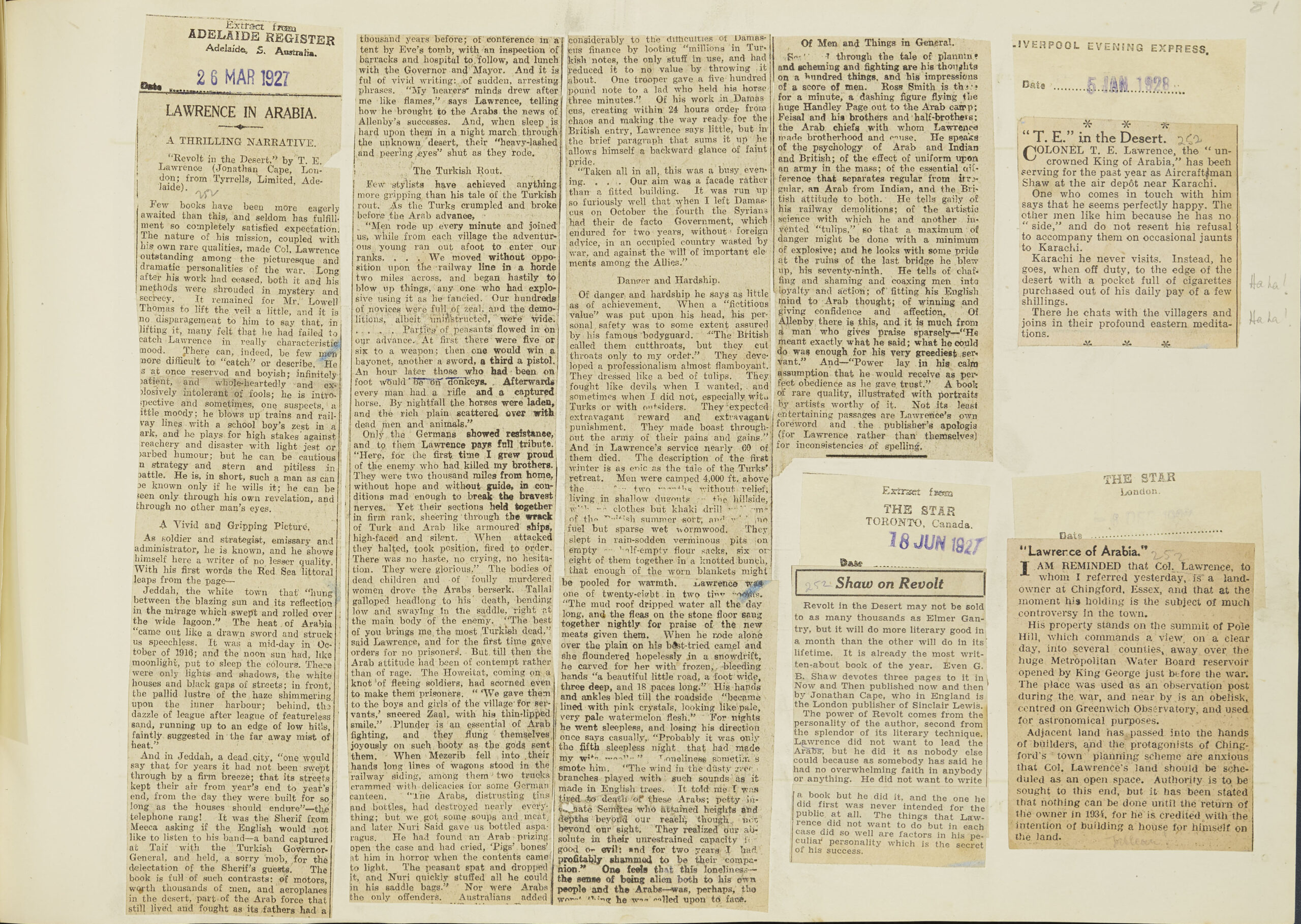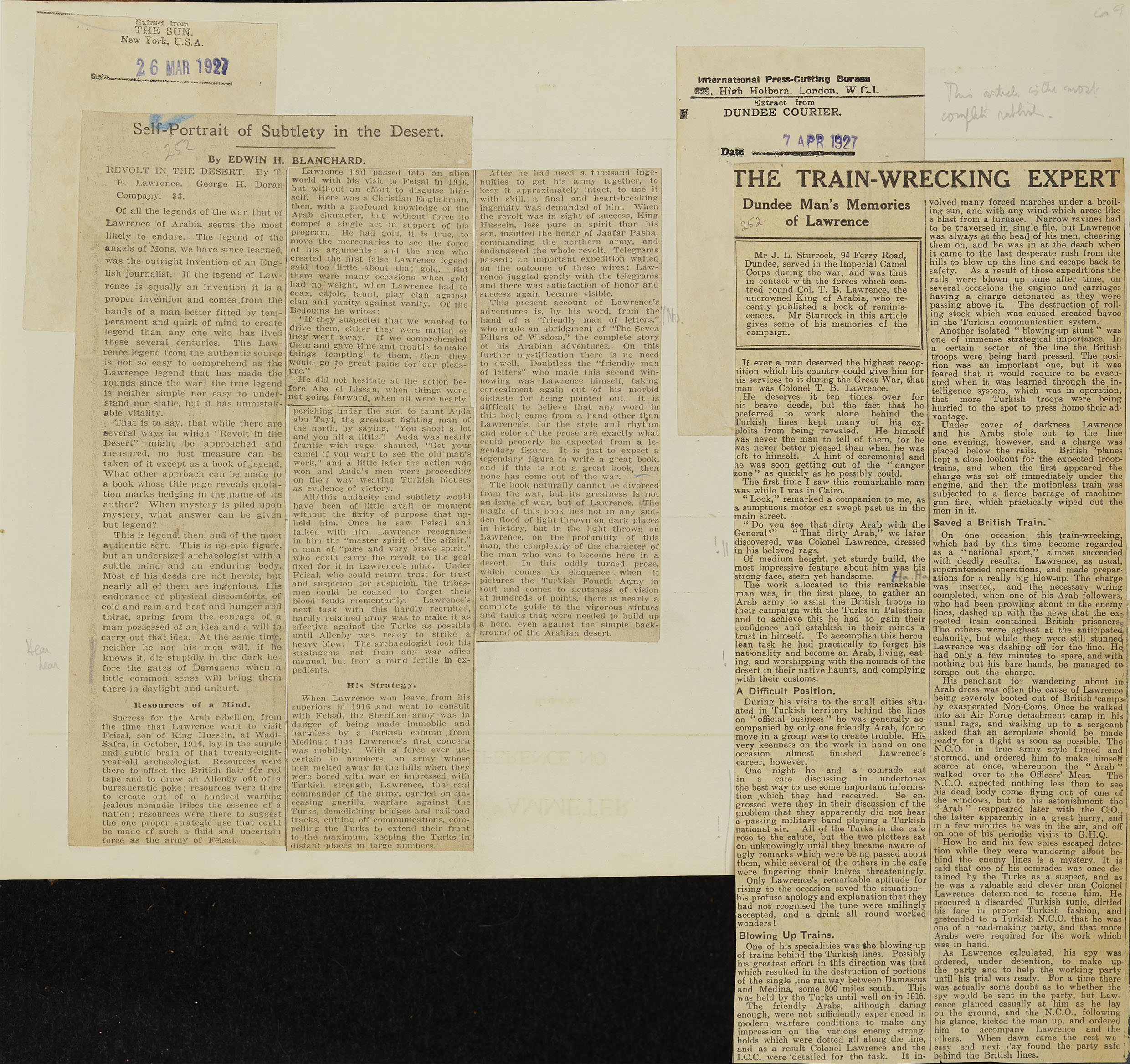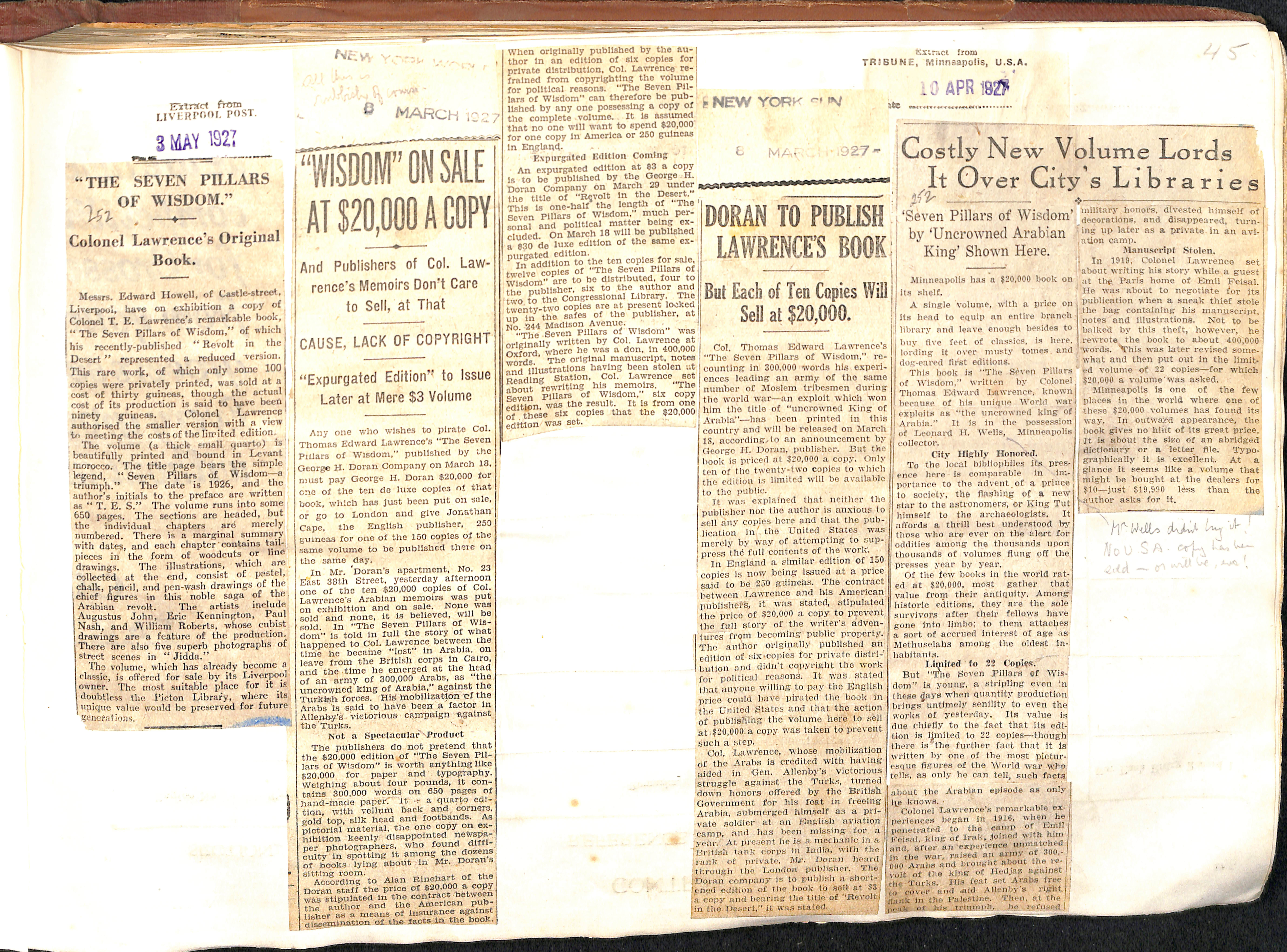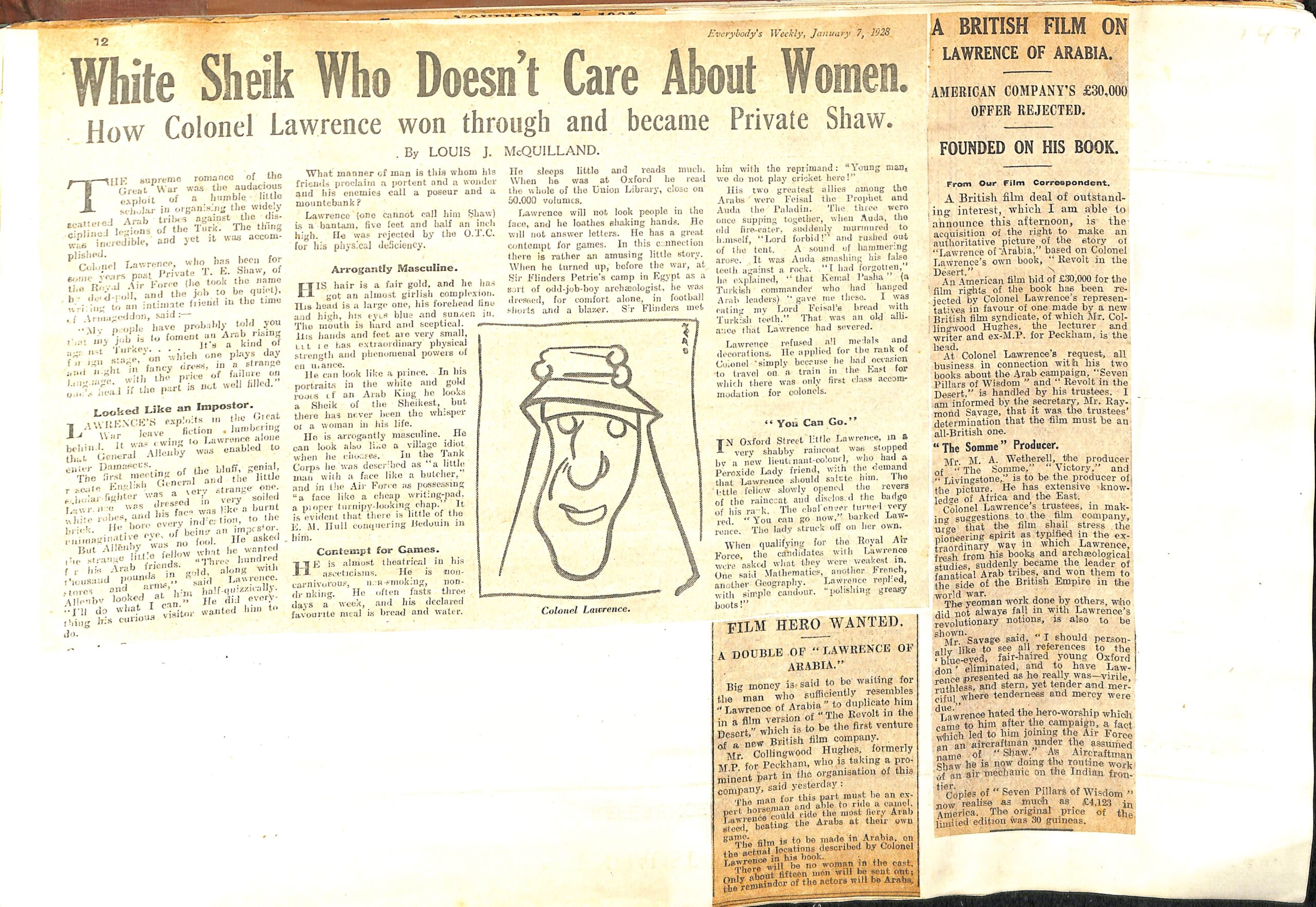
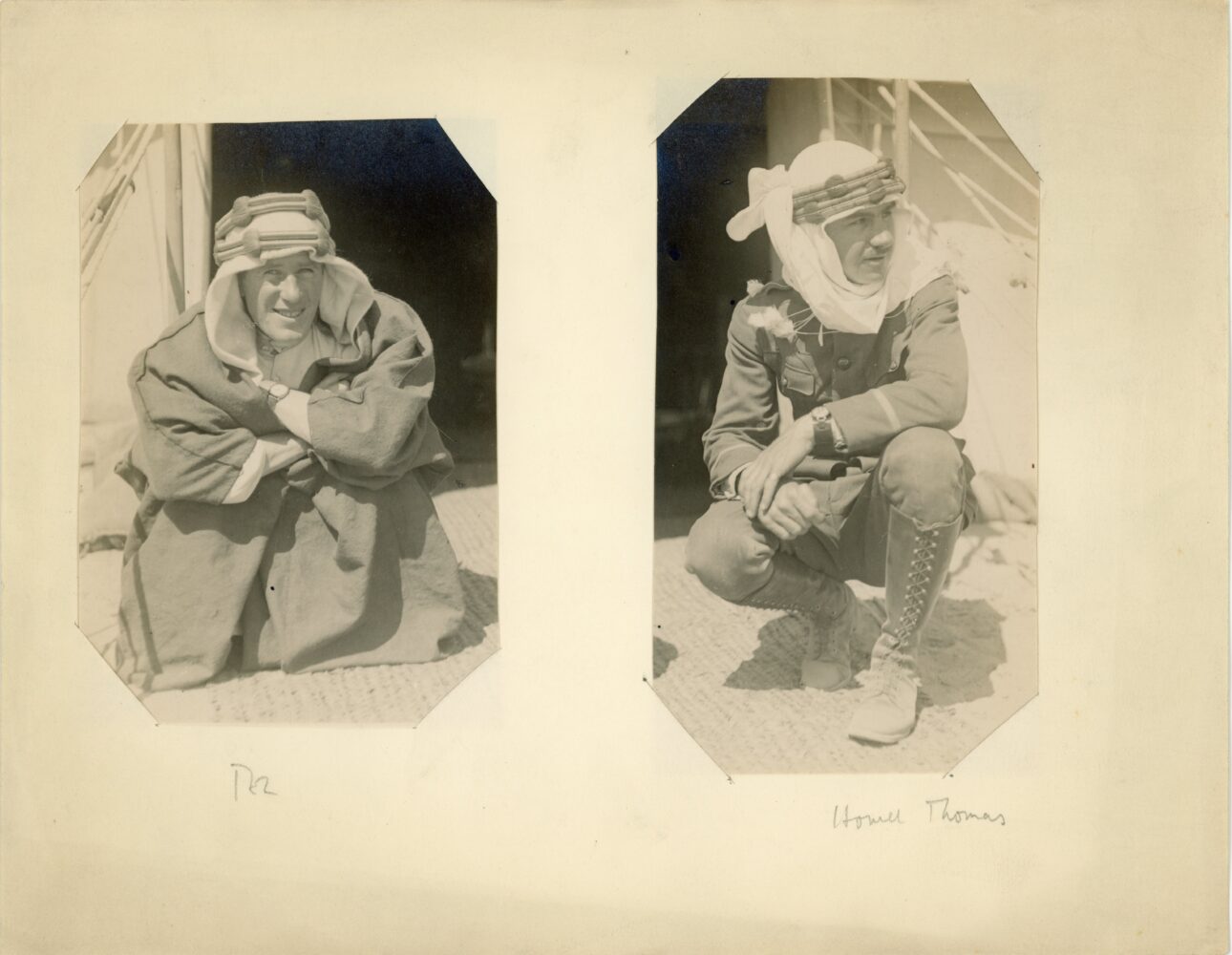

T E. Lawrence is most famous for his exploits in the First World War as a British Officer assigned to work with tribal leaders during the Arab revolt against the Ottoman Empire, in pursuit of Arab independence. Working closely with Emir Faisal (1885–1933), the son of Sherif Hussein of Mecca, Lawrence devised a guerrilla campaign in which the Arab forces carried out raids on the Hejaz railway, disrupting the supply lines of the Turkish troops. From 1916 to 1918, Lawrence was immersed in the life of the Bedouin and dressed in Arab robes with a golden dagger.
After a number of hazardous journeys and near-death experiences, Lawrence and the Arab forces reached Damascus in October 1918. However, far from achieving the promised independence, it transpired that Syria had already been apportioned to France, a fact that Lawrence had known for some time. It was only the beginning of negotiations for independence for the Middle East, but Lawrence was thoroughly disillusioned by his experiences and his role in the conflict.
Djebella Tunic
Djebella tunic, belonging to Victor Siddons, Royal Flying Corps pilot and associate of T.E. Lawrence during the Arab Revolt.
Acc. 2020/24. Loan from the T.E. Lawrence Society.


Hejaz Stamps
Set of Hejaz stamps commissioned by the Arab Bureau c. 1916-1918 to a design researched by T.E. Lawrence and Sir Ronald Storrs based on Islamic motifs in the museum in Cairo.
Wilson Papers, P450/R/REM/1/2
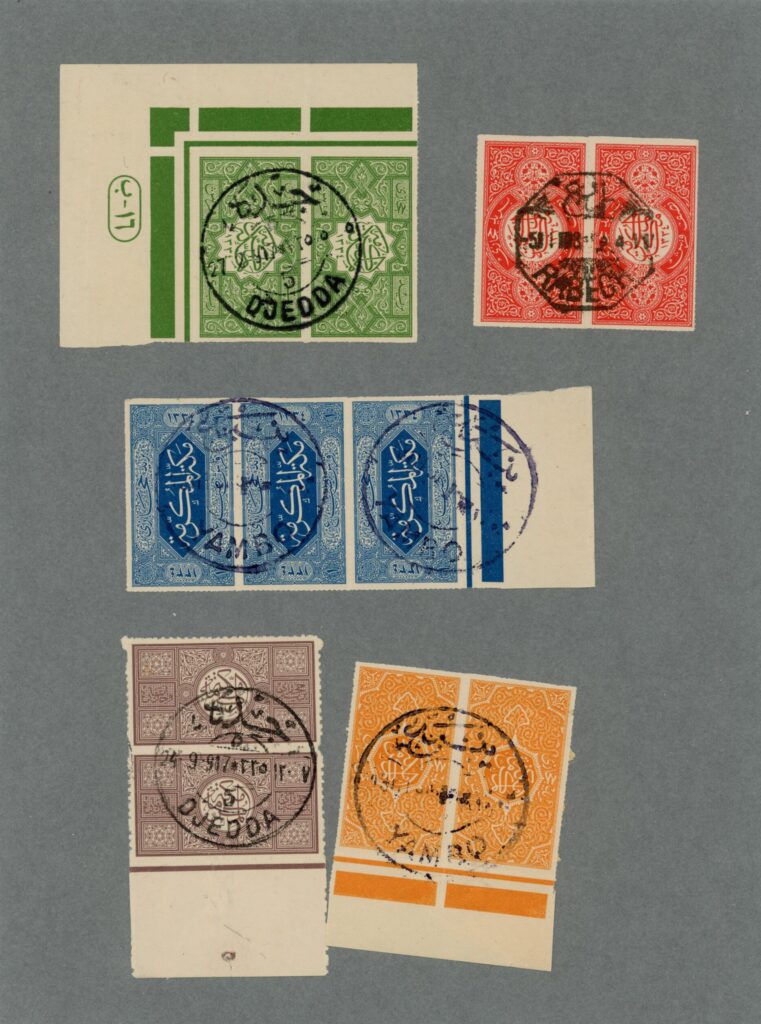

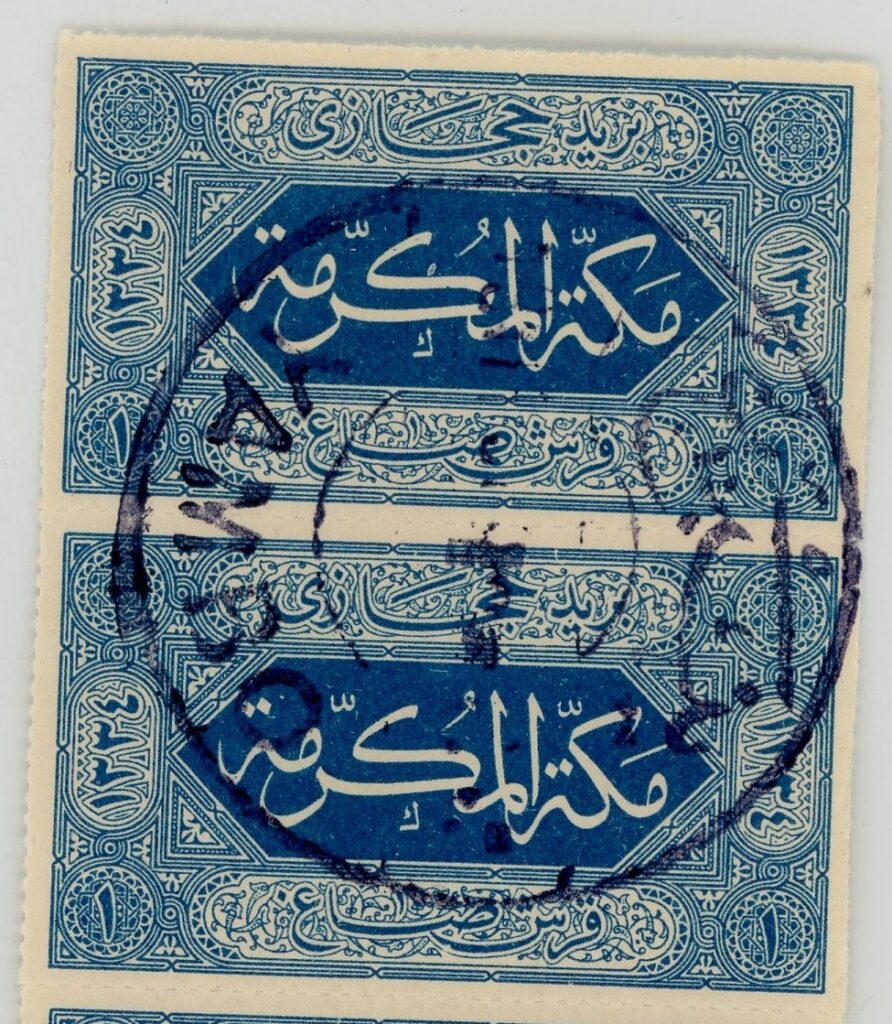
Lawrence and Lowell Thomas
The American journalist Lowell Thomas (1892–1981) gained permission to travel to Arabia and report on the revolt in 1918.
Hogarth Papers, P452/MIL/3



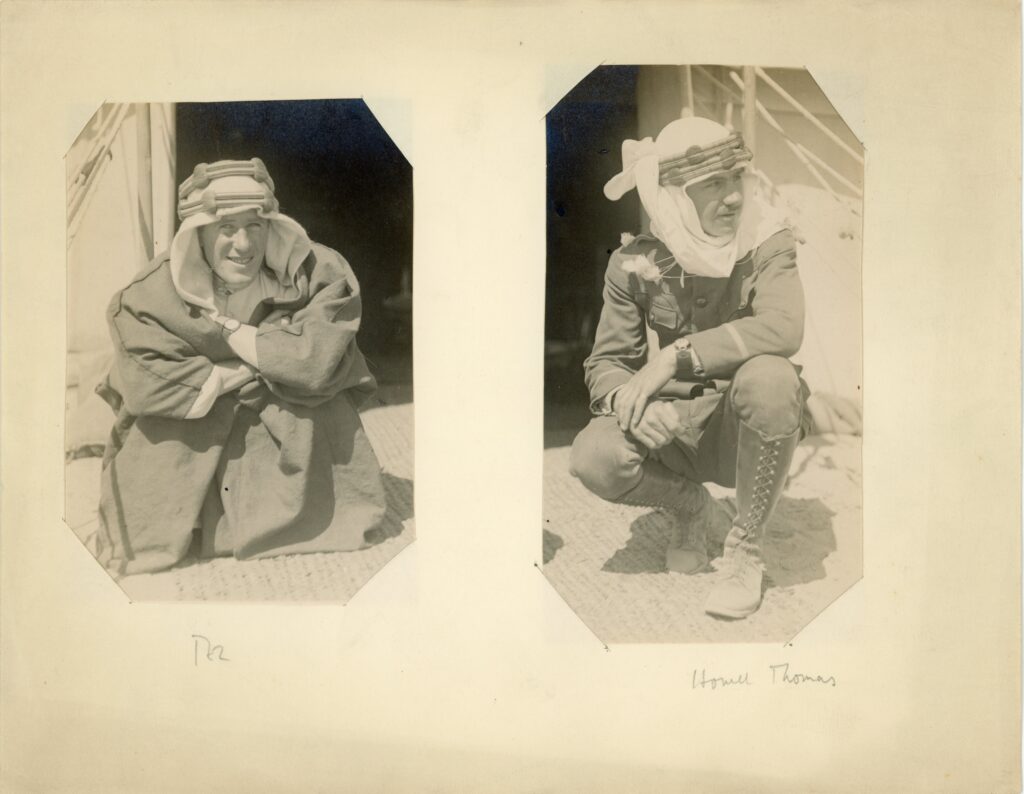
Arab Army at Waheida
Photograph by T.E. Lawrence of the Arab Army. Waheida was located south-west of Ma’an, a city in modern-day Jordan.
Hogarth Papers, P452/MIL/3.


Hogarth’s Dream?
This caricature is from a series by Sir Mark Sykes (1879-1919), the diplomatic adviser who was instrumental in the notorious Sykes-Picot agreement, which divided the Middle East into territories to be governed by Britain and France.
The caricatures purport to express a humorous approach to relations between Western and Eastern figures, with this cartoon depicting “Sultan Feisal I (of Egypt)” with a young lady in Western dress. The title references the eighteenth-century satirical artist William Hogarth’s series “The Rake’s Progress”, although the note “Hogarth’s Dream” may also suggest a link to David George Hogarth. Sykes died during the Spanish flu pandemic of 1919, whilst part of the British Delegation at the Paris Peace Conference.
Hogarth Papers, P452/PER/4/2
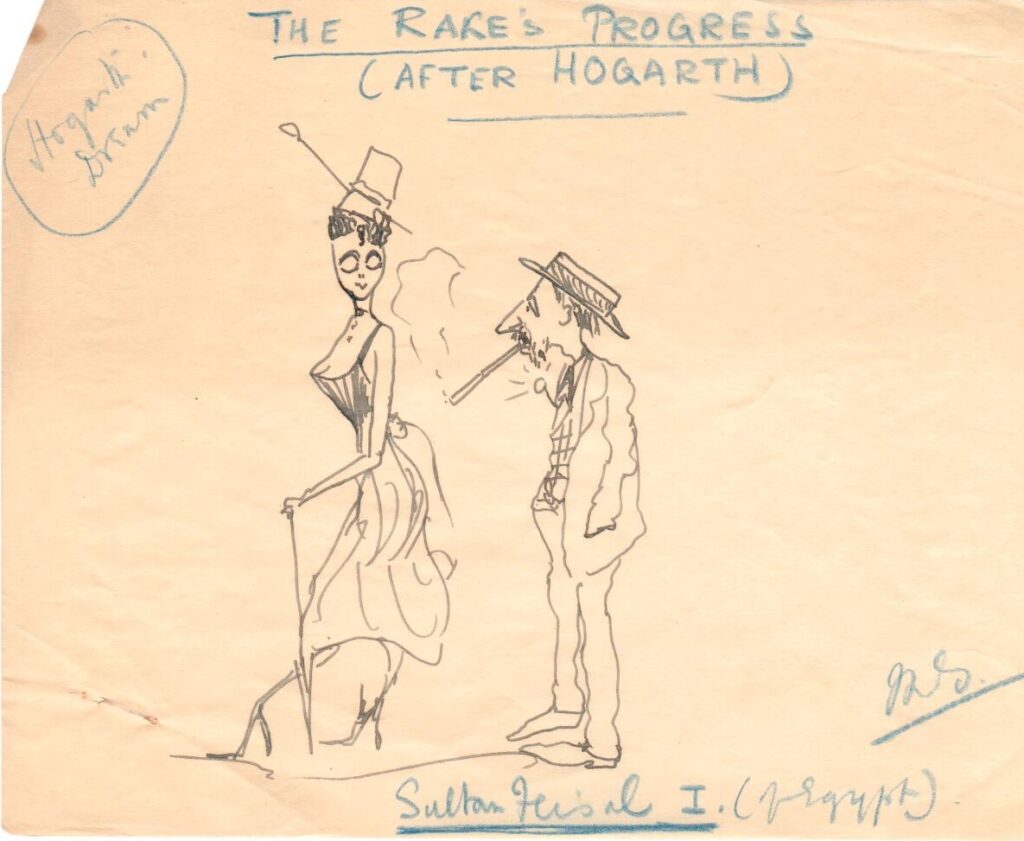

Within Hearing of the Guns
This letter from David George Hogarth to his son William D. Hogarth describes the Third Battle of Gaza in November 1917.
“I am up at the front again within hearing of the guns & sight of their objective. Last night, when our first big attack was made on the Gaza outposts, it was rather terrible both to hear & see. From 11p.m. to 4 a.m. a continuous war with the horizon lit up as by summer lightning.”
Hogarth Papers, P452/MIL/4.




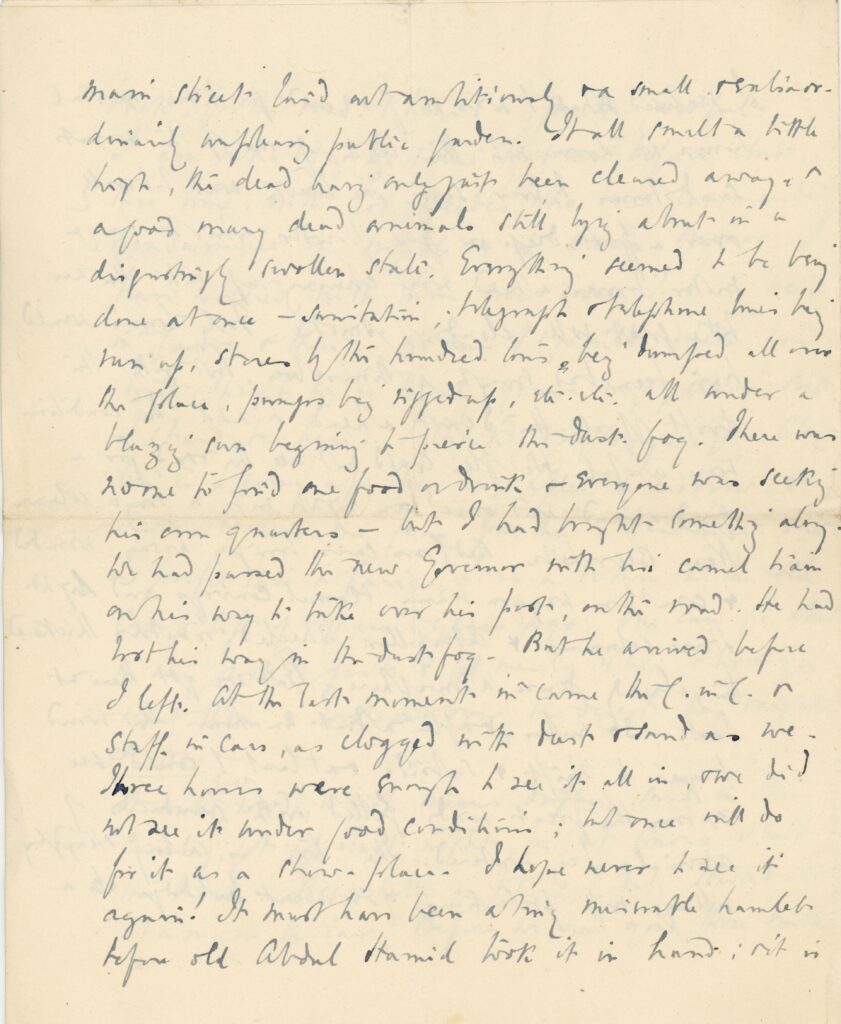
Map of Kut-el-Amara
Map of the Tigris valley from Sheikh Sa’ad to Kut-el-Amara, printed on linen by the Mesopotamian Expeditionary Force, c. 1915.
T.E. Lawrence was involved in the attempted relief of the siege of Kut in 1916, in which British forces, including Indian and British troops, were trapped by Turkish forces.
Wilson Papers, P450/R/REM/1/1/3.





Writing the Arab Revolt
After the War, Lawrence dedicated himself to writing his monumental book Seven Pillars of Wisdom about his experiences in the Arab Revolt. This book has an extremely complex history.
Lawrence is alleged to have lost an early manuscript whilst changing trains at Reading station in 1919 and entirely rewritten it. An enthusiast for fine printing, he produced an elaborately type-set illustrated version of the book in 1926 known as the Subscribers’ Edition which was distributed to friends and associates.
Apparently shy of publicity, Lawrence did not want a full copy to be widely published in his lifetime and so arranged to publish an abridged version, Revolt in the Desert, which came out in 1927 whilst he was stationed abroad with the R.A.F. Finally, a full version of the book was published for a general readership after Lawrence’s death in 1935.
Illustrations for Seven Pillars of Wisdom
To illustrate his elaborate Subscriber’s Edition of Seven Pillars of Wisdom, T.E. Lawrence commissioned artworks from many of the upcoming Modernist artists of the day including Eric Kennington, William Roberts and Paul Nash as well as well-established figures such as Augustus John. This bound copy of the proof illustrations was produced by the Golden Cockerel Press in 1926, and is open at the illustration “Camel March” by William Roberts.
Magdalen College Library


Bust of T.E. Lawrence by Eric Kennington
Nine casts of this bust by the sculptor and war artist Eric Kennington (1888-1960) were made in 1926 – another can be found in the memorial to Lawrence in the crypt of St Paul’s Cathedral. Kennington was one of the main illustrators of Seven Pillars of Wisdom and portrayed Lawrence many times over a fifteen-year period.
Donation to Magdalen College by Michael and Felicia Crystal


Reviews from the greats
Lawrence canvassed opinion on his book from many of the most prominent writers of his day. In this letter to Hogarth from 1923, he discusses the opinions of Gertrude Bell, Thomas Hardy and George Bernard Shaw, and considers an abridged version by Edward Garnett.
Hogarth Papers , P452/REL/2/1.


Letter from Sir Ronald Storrs
Sir Ronald Storrs (1881–1955) was a Political Officer during the Arab Revolt where he became a friend of Lawrence. In 1917, he became governor of Jerusalem and later held other diplomatic and colonial posts. In this 1927 letter he expresses thanks for a copy of the elaborate Subscribers’ Edition of Seven Pillars of Wisdom, in which he is referred to by Lawrence as “the great man among us.”
Hogarth Papers, P452/REL/2/1


Lawrence’s Scrapbook
Lawrence began compiling this album of reviews of Revolt in the Desert in 1927-28 whilst stationed in Karachi, then in India, (now Pakistan), as an Aircraftman in the R.A.F. He worked as a clerk in this period and appears to have used a blank engineering logbook entitled “Digest of Engine Troubles” to paste in his clippings, which were sent to him by Charlotte Payne Townshend, wife of George Bernard Shaw. Many pages are annotated with his personal reactions to the contents – often “Ha! Ha!”.
The album was later owned by the poet Siegfried Sassoon and was acquired by Magdalen College in 2021.
Acc 2021/44


